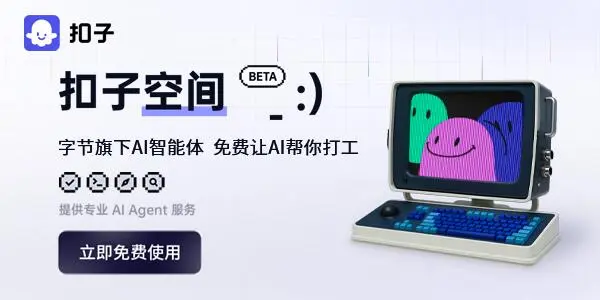在react中实现事件处理,有多种写法,那那种写法相对更优,更利于React的渲染性能呢?React组件中添加事件处理的几种方式
constructor函数中bind
class ReactEvent extends Component {
constructor(props) {
super(props);
this.handleClick = this.handleClick.bind(this);
}
handleClick() {
console.log('Click');
}
render() {
return <button onClick={this.handleClick}>Click Me</button>;
}
}使用箭头函数(实验语法,尚未标准化)
render中使用箭头函数
class ReactEvent extends Component {
handleClick() {
console.log('Click');
}
render() {
return <button onClick={() => this.handleClick()}>Click Me</button>;
}
}使用class fields语法(https://babeljs.io/docs/en/ba...)
class ReactEvent extends Component {
//此函数会被绑定到ReactEvent类的实例
handleClick = () => {
console.log('Click');
}
render() {
return <button onClick={this.handleClick}>Click Me</button>;
}
}在render中使用bind
class ReactEvent extends Component {
handleClick() {
console.log('Click');
}
render() {
return <button onClick={this.handleClick.bind(this)}>Click Me</button>;
}
}几种方式比较
| 影响 | constructor函数中bind | 使用class fields语法 | render中使用箭头函数 | 在render中使用bind |
|---|---|---|---|---|
| render时生成新函数 | 否 | 否 | 是 | 是 |
| 性能 | 无影响 | 无影响 | 有影响 | 有影响 |
| 可直接携带参数 | 否 | 否 | 是 | 是 |
| 简洁性 | 不好 | 好 | 好 | 好 |
//仅作为示例代码,不遵循常用代码规范
//子组件
class Button extends React.PureComponent {
render() {
console.log('================')
return (
<button onClick={this.props.handleClick}>hahaha</button>
)
}
}
//父组件
class ButtonList extends React.Component {
constructor(props) {
super(props);
this.state = {
index: -1,
list: [1, 2, 3, 4]
};
this.handleClick = this.handleClick.bind(this);
}
handleClick() {
console.log('Click');
}
onStateChange = () => {
this.setState({
index: 1
});
}
render() {
return (
<div>
<button onClick={this.onStateChange}>stateChange</button>
{
this.state.list.map(item => <Button handleClick={this.handleClick}/>)
}
</div>
)
}
}
Reactdom.render(
<ButtonList />, document.getElementById('root')
);1
事件处理中传参
在开发当中,经常遇到对一个列表做操作,可能包含删除,修改,查看。这时候绑定事件就需要传参,通常为id。
直接传递参数
//render中使用箭头函数
{
this.state.list.map(item => (
<Button onClick={() => this.handleClick(item.id)}/>
))
} //render中使用bind
{
this.state.list.map(item => (
<Button onClick={this.handleClick.bind(this, item.id)}/>
))
}使用data属性
//handleClick中通过e.target.dataset.id获取
{
this.state.list.map(item => (
<Button data-id={item.id} onClick={this.handleClick}/>
))
}总结
这里不强制推荐使用哪一种,对于各个团队来说,可以根据项目,选择自己团队的事件绑定方式。
因为箭头函数的简洁性,在公司项目中,我们团队通常使用class fields 定义箭头函数来绑定事件。当需要传参的时,单个参数传递使用data属性传参。多个参数传递时,采用拆分子组件的方式回调传参。
//子组件
class Button extends React.PureComponent {
handleClick = () => {
this.props.handleClick(this.props.item);
}
render() {
return (
<button onClick={this.handleClick}>hahaha</button>
)
}
}
//父组件
class ButtonList extends React.Component {
constructor(props) {
super(props);
this.state = {
list: [1, 2, 3, 4]
};
}
handleClick = (item) => {
console.log('Click', item);
}
render() {
const { list=[] } = this.state;
return (
<div>
{
list.map(item => <Button handleClick={this.handleClick} item={item}/>)
}
</div>
)
}
}
ReactDOM.render(
<ButtonList />, document.getElementById('root')
);结语
前端发展巨快,各种新特性,新框架,新UI层出不穷。需要我们不断保持学习,深挖技术底层,这样遇到任何新的技术,才能够以一法破万法。
来自:https://segmentfault.com/a/1190000019233852
本文内容仅供个人学习/研究/参考使用,不构成任何决策建议或专业指导。分享/转载时请标明原文来源,同时请勿将内容用于商业售卖、虚假宣传等非学习用途哦~感谢您的理解与支持!

Vuetify基于vue2.0,为移动而生的组件框架
Vuetify 支持SSR(服务端渲染),SPA(单页应用程序),PWA(渐进式Web应用程序)和标准HTML页面。 Vuetify是一个渐进式的框架,试图推动前端开发发展到一个新的水平。
Vue中插槽的作用_Vue组件插槽的使用以及调用组件内的方法
通过给组件传递参数, 可以让组件变得更加可扩展, 组件内使用props接收参数,slot的使用就像它的名字一样, 在组件内定义一块空间。在组件外, 我们可以往插槽里填入任何元素。slot-scope的作用就是把组件内的数据带出来
react 函数子组件(Function ad Child Component)
函数子组件(FaCC )与高阶组件做的事情很相似, 都是对原来的组件进行了加强,类似装饰者。FaCC,利用了react中children可以是任何元素,包括函数的特性,那么到底是如何进行增强呢?

Vue和React组件之间的传值方式
在现代的三大框架中,其中两个Vue和React框架,组件间传值方式有哪些?组件间的传值是灵活的,可以有多种途径,父子组件同样可以使用EventBus,Vuex或者Redux
vue.js自定义组件directives
自定义指令:以v开头,如:v-mybind。bind的作用是定义一个在绑定时执行一次的初始化动作,观察bind函数,它将指令绑定的DOM作为一个参数,在函数体中,直接操作DOM节点为input赋值。
vue中prop属性传值解析
prop的定义:在没有状态管理机制的时候,prop属性是组件之间主要的通信方式,prop属性其实是一个对象,在这个对象里可以定义一些数据,而这些数据可以通过父组件传递给子组件。 prop属性中可以定义属性的类型,也可以定义属性的初始值。
Web组件简介
Web组件由三个独立的技术组成:自定义元素。很简单,这些是完全有效的HTML元素,包含使用一组JavaScript API制作的自定义模板,行为和标记名称(例如,<one-dialog>)。
web组件调用其他web资源
web组件可以直接或间接的调用其他web资源。一个web组件通过内嵌返回客户端内容的另一个web资源的url来间接调用其他web资源。在执行时,一个web资源通过包含另一个资源的内容或者转发请求到另一个资源直接调用。
vue中如何实现的自定义按钮
在实际开发项目中,有时我们会用到自定义按钮;因为一个项目中,众多的页面,为了统一风格,我们会重复用到很多相同或相似的按钮,这时候,自定义按钮组件就派上了大用场,我们把定义好的按钮组件导出,在全局引用,就可以在其他组件随意使用啦,这样可以大幅度的提高我们的工作效率。
Vue子组件调用父组件的方法
Vue中子组件调用父组件的方法,这里有三种方法提供参考,第一种方法是直接在子组件中通过this.$parent.event来调用父组件的方法,第二种方法是在子组件里用$emit向父组件触发一个事件,父组件监听这个事件就行了。
内容以共享、参考、研究为目的,不存在任何商业目的。其版权属原作者所有,如有侵权或违规,请与小编联系!情况属实本人将予以删除!



